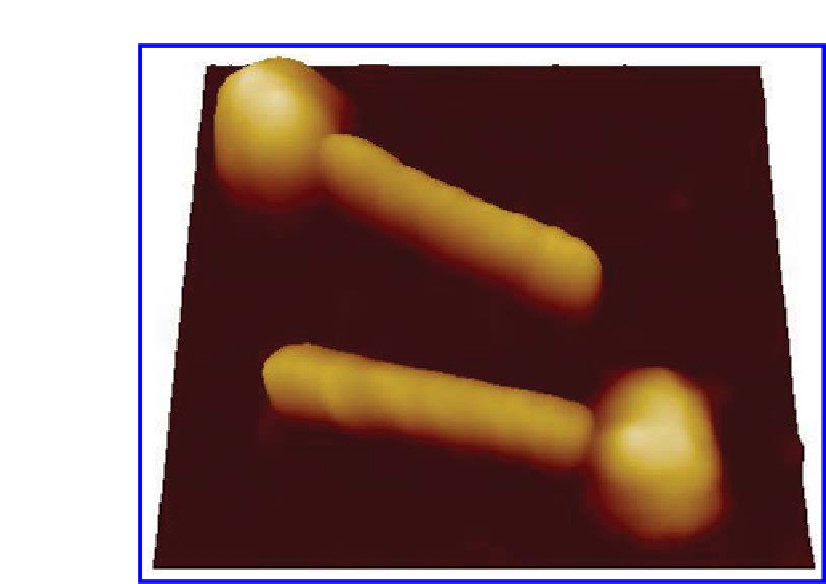Biology Reference
In-Depth Information
Figure 16.6.
AFM image of two T4-phages deposited on mica. Scanning size: 280
nm. The image was recorded in air using the tapping mode (kindly provided by J.
Adamcik).
The mechanical properties of the viral capsid are important for the
survival and the infectivity of the organism. Moreover, this protective coating
can serve as a “nanocontainer” for gene or drug delivery.
An understanding
of the elastic properties of the capsid is a prerequisite for its use as a
pharmacological vehicle.
Numerous studies have been conducted to explore the mechanical
properties of different types of virus. For a comprehensive overview
of the pertinent literature, the reader is referred to the review by Roos
et al.
4
3
Recording FD curves for virus particles is nowadays a relatively
straightforward task. However, it is not easy to extract Young's modulus
from the recorded data, owing to the often complex geometry of the capsid
and the small size of the particles. When a load is applied to the capsid, it
deforms and new contacts are established with the underlying substrate.
These new contacts modify, and render non-linear, the boundary conditions
in the mathematical model, thereby complicating the calculation of Young's
modulus. Moreover, when an AFM tip compresses a virus, it very rapidly
“senses” also the underlying incompressible substrate, thereby introducing
an additional complication to the FD curve.















Search WWH ::

Custom Search